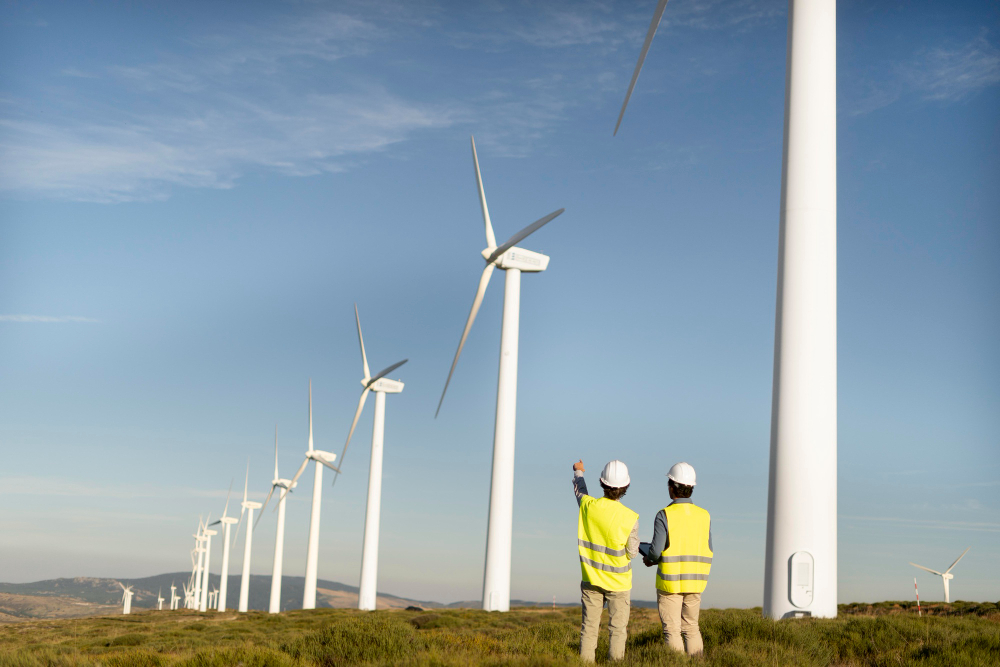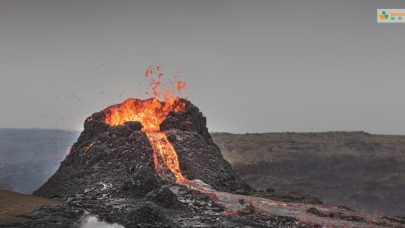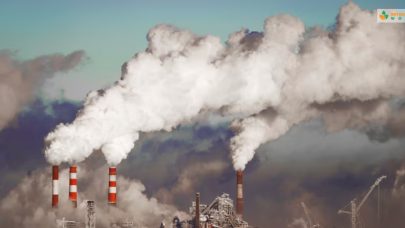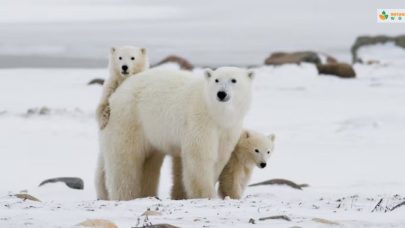Global warming refers to the long-term increase in Earth’s average surface temperature. Primarily due to human activities that result in the accumulation of greenhouse gases in the atmosphere.
The most significant contributor to global warming is the burning of fossil fuels. Like coal, oil, and natural gas, which releases carbon dioxide (CO2) and other greenhouse gases into the atmosphere. These gases trap heat and lead to a gradual warming of the Earth’s climate.
Understanding Global Warming
Understanding global warming involves grasping the scientific principles behind the phenomenon and recognizing the human activities that contribute to it.
Global warming involves recognizing the scientific principles, human activities driving the phenomenon and the urgent need for collective action to address its impacts. Education, research, and proactive measures are essential in mitigating and adapting to the challenges posed by a warming climate.
What Causes Global Warming?

Global warming is primarily caused by the increased concentration of greenhouse gases (GHGs) in the Earth’s atmosphere, which trap heat and lead to a gradual rise in the planet’s average temperature.
Human activities, particularly the burning of fossil fuels and deforestation, are the main contributors to the enhanced greenhouse effect.
Generating Power
Generating power involves the conversion of various forms of energy into electricity. There are several methods for power generation, each utilizing different energy sources and technologies.
Manufacturing Goods
Manufacturing goods involves the process of transforming raw materials, components, or parts into finished products that can be used or sold. The manufacturing process can vary significantly depending on the type of product being produced and the industry involved.
Using Transportation
Transportation involves the movement of people and goods from one location to another. Various modes of transportation are available, each serving different purposes and catering to specific needs.
Cutting Down Forests
The cutting down of forests, often referred to as deforestation, has significant environmental, social, and economic consequences. While there are some reasons for tree removal that are sustainable and necessary, such as selective logging or making way for infrastructure development, large-scale and indiscriminate deforestation can have detrimental effects.
Producing Food
Producing food is a complex and interconnected process that involves the efforts of farmers, scientists, policymakers, and many others in the food supply chain. It is essential to balance the need for increased food production with sustainability and environmental considerations.
Consuming Too Much
Producing excessive amounts of food puts a strain on natural resources such as land, water, and energy. Large-scale agriculture for overconsumption can contribute to deforestation, soil degradation, and water pollution.
The production and transportation of food contribute to greenhouse gas emissions. Overconsumption exacerbates this environmental impact.
Powering Buildings
Powering buildings involves providing the necessary energy for various functions within a structure, such as lighting, heating, cooling, appliances, and electronic devices. The goal is to ensure a reliable, efficient, and sustainable energy supply.
The choice of energy source and the overall approach to powering buildings often depends on factors such as location, budget, environmental considerations, and local regulations.
Increasingly, there is a global emphasis on transitioning to sustainable and renewable energy sources to reduce environmental impact and address climate change.
Effects Of Global Warming
Global warming refers to the long-term increase in Earth’s average surface temperature due to human activities, primarily the release of greenhouse gases into the atmosphere. The effects of global warming are widespread and impact various aspects of the environment, ecosystems, and human societies.
Global warming requires international cooperation and efforts to reduce greenhouse gas emissions, transition to sustainable energy sources, and adapt to the changes that are already underway. Mitigating the impacts of global warming is crucial for the well-being of both the natural environment and human societies.
Rising Sea Level
Rising sea levels refer to the long-term increase in the average level of the Earth’s oceans. This phenomenon is primarily driven by global warming and climate change, resulting from the increase in greenhouse gas emissions, particularly carbon dioxide, in the Earth’s atmosphere.
The two main contributors to rising sea levels are thermal expansion and the melting of glaciers and polar ice caps.
Higher Temperature
Higher temperatures, often associated with global warming and climate change, have wide-ranging effects on the environment, ecosystems, and human societies.
The impacts of higher temperatures require a combination of mitigation efforts to reduce greenhouse gas emissions and adaptation strategies to cope with the changes that are already underway. International cooperation is crucial to effectively address the global nature of climate change and its associated challenges.
Plant And Animal Extinction
Plant and animal extinction, driven largely by human activities and environmental changes, is a significant concern with far-reaching ecological, environmental, and social consequences.
social consequences.
Efforts to prevent plant and animal extinction require a holistic approach that addresses both the direct causes and underlying factors contributing to biodiversity loss. It involves collaboration at local, national, and international levels to promote sustainable practices and protect the diversity of life on Earth.
Extreme Weather Events
Extreme weather events are occurrences that deviate significantly from normal weather patterns and are often characterized by unusually severe or intense conditions. These events can result from a combination of natural climate variability and human-induced factors, such as climate change.
Ocean Acidification
Ocean acidification is a process that occurs when the ocean absorbs carbon dioxide (CO2) from the atmosphere, leading to a decrease in the pH of seawater.
This phenomenon is closely linked to the ongoing increase in atmospheric CO2 levels resulting from human activities, primarily the burning of fossil fuels and deforestation.
Melting Polar Ice
It seems like your question got cut off, but I assume you’re referring to the melting of polar ice caps, which is a critical aspect of climate change. The two main polar regions are the Arctic, surrounding the North Pole, and the Antarctic, surrounding the South Pole.
Efforts to address the melting of polar ice caps involve a combination of global climate action, conservation measures, and adaptation strategies to minimize the impacts on ecosystems and human societies.
Dirtier Air
“Dirtier air” typically refers to an increase in air pollution, which can have detrimental effects on both the environment and human health. Air pollution is the presence of harmful substances in the air, and it can result from various human activities and natural processes.
Ways To Stop It

Addressing and mitigating global warming requires collective efforts at the individual, community, national, and international levels. Stopping global warming requires a comprehensive and coordinated effort involving individuals, businesses, governments, and international organizations. By adopting sustainable practices, reducing greenhouse gas emissions, and investing in clean energy, the global community can work towards a more sustainable and resilient future.
Use Renewable Energy
Using renewable energy is a crucial and effective step in mitigating climate change and reducing dependence on fossil fuels. Renewable energy sources are abundant, sustainable, and have lower environmental impacts compared to traditional energy sources.
Recycle
Recycling is a practical and impactful way for individuals to contribute to environmental sustainability.
By incorporating recycling into daily habits and advocating for responsible waste management, individuals can play a significant role in reducing the environmental impact of waste and promoting a more circular and sustainable economy.
Use Less Power
Energy-saving practices in your daily life, you can contribute to a more sustainable and energy-efficient lifestyle. Reducing power consumption not only benefits the environment but can also lead to long-term cost savings.
Opt For Sustainable Transportation
Choosing sustainable transportation options can significantly reduce your carbon footprint and contribute to a more environmentally friendly lifestyle.
Opting for sustainable transportation not only helps combat climate change but also contributes to reduced traffic congestion, improved air quality, and enhanced overall urban sustainability.
Global Warming Vs Climate Change

“Global warming” and “climate change” are related concepts, but they refer to different aspects of the Earth’s changing climate.
| Global Warming | Climate Change |
| Global warming is the rising of the average temperature on a global basis, with the mixture of greenhouse gases also in the atmosphere. | Climate change is the increase in the climate over a point of time that includes wind patterns, precipitation and temperature. |
| It happens mainly due to human activities. | It happens both due to human and natural activities. |
| Caused by the excessive emission of greenhouse gases. | This is caused due to climate change, changing sea levels, and new weather patterns. |
| Results in the rising temperature of the earth’s surface. | Resulting in ocean level changes, volcanic eruptions, release of greenhouse gases, and deforestation. |
| It is a worldwide problem. | It can be either a global or a regional problem. |
The Climate Is Changing, Why Aren’t We!
The recognition that the climate is changing due to human activities is widespread, and there are numerous efforts underway to address and mitigate these changes. However, the challenges associated with addressing climate change are complex and multifaceted.
While progress may seem slow at times, there are positive developments, including increased global awareness, commitments to renewable energy, advancements in sustainable technologies, and policy changes.
Read more..














